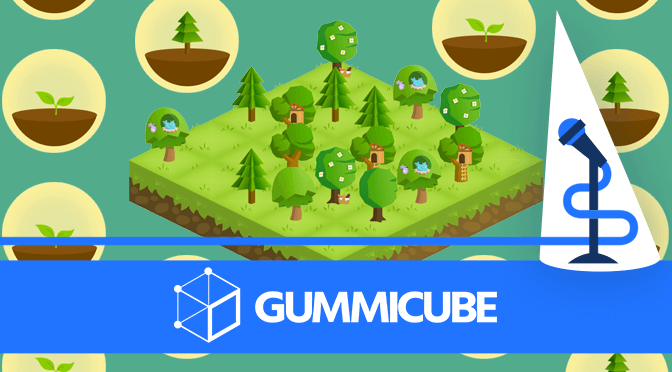Forest App Store Spotlight
August 27th, 2019


by David Bell
CEO at Gummicube, Inc.
Smart phones. For all the value they bring to work and life, smart phones can sometimee be a distraction. One of the millions of apps that aims to solve this problem is Forest, an app that turns time spent away from the phone into points that users can redeem to help plant real trees. The app can help trees grow, but is it built in a way to help its keyword rankings and visibility grow in the App Store and Play Store? For this week’s App Store Spotlight, we turn our focus to Forest.
iOS
On the Apple App Store, Forest is the #1 app in the Productivity category. It ranks in the top of searches for terms like “Concentrate,” “focus app,” and “forest app,” as well as several other productivity terms. It also ranks in the top five for keywords like “focus timer,” “study apps” and “study tools.” Its keyword rankings begin to fall for terms like “study aid” (#17), “habit builder” (#23) and competitors like “Study mate” (#27) and “the productivity timer” (#24). While it ranks #1 for “plant a tree,” there are still several environmental keywords it does not rank for yet, like “plant trees” and “nature” terms.
Creatives: Forest’s creative set begins with a video that demonstrates how the app works. It uses a time lapse to show the focus timer at work, then shows users the in-app forest that grows over time. While it does not show all aspects of the app, it at least demonstrates the main focus.
Following the video, it has nine screenshots. While many do look similar, since they show different stages of the tree growing or withering, the callout text at the top of the screen explains the functions of the app and how they relate to the screenshot.
The callout text can also be a little wordy, with the first screenshot saying: “Whenever you want to focus on your work, plant trees.” These could be condensed into shorter lines that users can read at a glance to quickly grasp the message.
Each screenshot does a good job highlighting a different aspect of the app, starting with the core functionality and listing the additional features later on. One thing it could focus on to improve conversions is to move the screenshot about planting trees further up in the order of creatives. This could appeal to more environmentally focused users, since it does rank well for “plant a tree.” That way users could quickly see that it lets them literally plant trees as well as grow virtual ones.
Title & Subtitle: The app’s title, “Forest – Stay Focused,” is 21 characters, leaving 9 spaces remaining. It could fit one more keyword in there while maintaining the core messaging of the app, but the title is properly keyword focused.
The subtitle, “Be productive on work & study” is a well-optimized subtitle. It contains several keywords, such as “be productive” (#1) and “study” (#3) while communicating the benefits of using the app. This serves as a good example of how to utilize the subtitle space.
Description: Forest’s description begins by calling out its awards and accolades, listing its top rankings and quoting positive reviews from The New York Times and Business Insider. While these are good things to highlight, users don’t get to the part of the description that goes over what the app does until several lines down.
The description itself features two paragraphs talking about how the app helps to improve productivity. It talks about how it provides a sense of responsibility for a virtual tree and how it helps users stop being distracted by their phones.
These lines are a little on the lengthy side, so they form large blocks of text when viewed on the phone. If it were to break them into shorter lines, it would be easier for users to read at a glance.
Additionally, while the description does brag about “over 460,000 real trees planted” in the accolades section, it does not mention how that works in the introduction. Calling that out could help convert users who are looking for an easy way to help the environment.
The feature set is well-designed, utilizing bullet points and separate features. They’re sorted by purpose, starting with “Stay Focused,” to highlight important aspects of the app. This is another section where it could go more into the tree planting aspect of the app, as it’s just mentioned at the end of the “Get Motivated” section.
Overall, the description should be restructured to ensure that Forest’s concepts and benefits can be understood at a glance. The description on iOS is primarily a tool for conversion and should be treated as such.
Google Play
On the Google Play Store, Forest is the top ranked app for terms like “focus app,” “plant a tree” and “productivity apps.” It ranks in the top five for “study app,” “trees” and “productive.” Its rankings get a bit lower for terms like “screen limit” (#24), “phone time tracker” (#25) and “life balance” (#34), although it does index for more “tree” terms than its iOS counterpart.
Creatives: Forest’s creative set is different from its iOS version, focusing more on functionality than screenshots. It begins with a two-image spread that calls it out as a “focus timer helping you beat the phone addiction” and its award as a Google Play “Top Productivity App.”
After that it goes into the functionality, using a single image to illustrate how the app shows trees growing or withering based on phone usage. The images use small font, so users will have to open the image and pay close attention to understand everything the screenshot is saying.
This version does not have a video. While the App Store and Play Store have different rules regarding video content, typically videos used on the App Store can be used on Google Play. If Forest were to use a promotional video, it could include footage of trees being planted in the real world or utilize outside footage of growing trees.
Description & Metadata: Forest’s Google Play description begins the same was as its iOS version, calling out its awards and praise before going into an introduction that discusses how the app works. The Google Play version also utilizes bold and italic text, as well as the occasional emoji, to emphasize key points.
Where the descriptions differ is the feature set. While the iOS version has a feature set listing the various aspects, Google Play just has one main feature list, then a second list for the Pro version. While having a secondary section for the Pro features is fine, it makes the initial feature list seem small by comparison when it could be expanded to delve more into the different aspects of the app.
Additionally, Google Play apps should have their keywords placed near the front of each line in order to index for them. While the Forest description does occasionally do that, with phrases like “Stay focused” (#2) and “plant trees” (#2), several lines start with words that are not helpful keywords. For instance, it starts some lines with phrases like “Manage your own tags” and “The sense of achievement and responsibility,” which do not assist with its keyword indexation.
Overall
Forest is a good example of how apps need to focus on optimization for each store, rather than just one. While it has succeeded quite well in the Apple App Store, its Google Play rankings could be improved by focusing on keyword optimization and placement.
Given the ongoing fires in the Amazon, Forest could also emphasize how the app can help plant real trees. This would help convert users who want to help make an impact, as well as improve its indexation on both stores for tree planting terms.
Overall, Forest does many things right, such as its use of feature sets on iOS and making full use of its creative sets. At the same time, it could improve its rankings on both stores with proper ASO. It still has room to grow and improve further, so App Store Optimization could help the app grow from a seedling to a towering redwood.
Want more information regarding App Store Optimization? Contact Gummicube and we’ll help get your strategy started.
Similar Articles

Posted on December 10th, 2025
By incorporating high-volume keywords, creatives, & A/B testing, the listing can better communicate the device’s capabilities during peak app seasonality.

Posted on December 5th, 2025
Discover Mobile has a solid foundation, supported by a strong brand identity; however, ASO requires regular testing and adjustments to stay competitive.

Posted on November 26th, 2025
With stronger creative updates and ongoing ASO experimentation, Wish can compete more effectively with larger players to help maximize its seasonal visibility.





